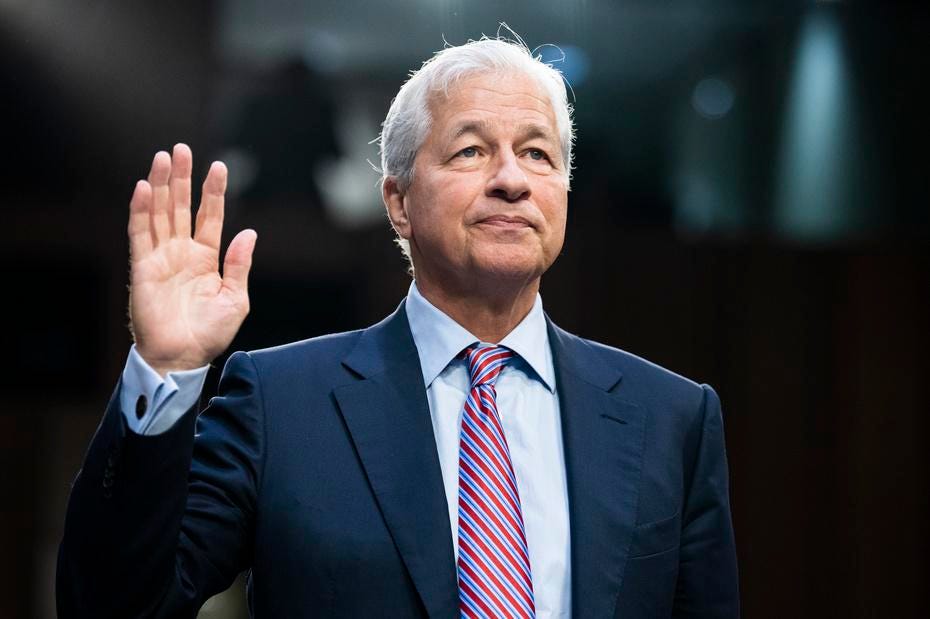The problem for many investors is that they are constantly bombarded with scary headlines that can lead to a detrimental decision to exit a long-term-oriented investment plan. As Lao Tzu states, “If you do not change direction, you may end up where you are heading,” but the sensationalistic 24/7 media world in which we reside today doesn’t make it easy to stay the course through thick and thin. However, no matter how disconcerting events may seem, history shows that the key to success in stocks is not to get scared out of them!
Alas, fear sells much better than greed and financial television, web sites and newspapers are in the business of attracting eyeballs, which often has little to do with helping those focused on multi-year time horizons achieve their long-term investment goals. A good example were headlines last week like, Jamie Dimon Says Effects of Banking Crisis Will Be Felt for “Years to Come” in conjunction with the release of the 2022 Annual Report letter from the JPMorgan Chase
JPM
CEO.
Certainly, we do not mean to suggest that Mr. Dimon offered unicorns and rainbows as he wrote:
We are prepared for potentially higher interest rates, and we may have higher inflation for longer.
If we have higher inflation for longer, the Fed may be forced to increase rates higher than people expect despite the recent bank crisis. Also, QT may have ongoing impacts that might, over time, be another force, pushing longer-term rates higher than currently envisioned. This may occur even if we have a mild – or not-so-mild – recession, as we saw in the 1970s and 1980s.
Today’s inverted yield curve implies that we are going into a recession. As someone once said, an inverted yield curve like this is “eight for eight” in predicting a recession in the next 12 months. However, it may not be true this time because of the enormous effect of QT. As previously stated, longer-term rates are not necessarily controlled by central banks, and it is possible that the inversion we see today is still driven by prior QE and not the dramatic change in supply and demand that is going to take place in the future.
However, there was little mention in the press that, historically speaking, Value Stocks and Dividend Payers, like those that we have long championed, have performed well no matter where the Fed Funds rate and benchmark 10-Year Treasury yield reside.
The same can be said for inflation levels and when interest rates are moving higher or lower. Believe it or not, Value Stocks have performed very well, on average, over the ensuing one, three and five years when the consumer price index is at the current 6.0% level or higher, while the only thing that can be said with certainty when interest rates are rising is that long-term bonds do not perform well.
We realize that past performance is never a guarantee of future results, but we think the plunge in the prices of many stocks over the last year or so discounts a significant amount of bad news that may or may not materialize.
Further, as Mr. Dimon stated, “While focusing on the risks, it’s also important not to forget the opportunities. The transition to a green economy will eventually require $4 trillion a year in capital expenditures. The IRA, CHIPS Act and Bipartisan Infrastructure Law combined will create huge opportunities for companies, investors and entrepreneurs across virtually every industry group in the United States. You can rest assured that our company is organizing to help clients make the most of these opportunities.”
He concluded, “Finally, when one talks about risk for too long, it begins to cloud your judgment. Looking ahead, the positives are huge. However events play out, it is likely that 20 years from now, America’s GDP will be more than twice the size it is today, and hundreds of millions of people around the world will have been lifted out of poverty.”
As such, we think those who share our long-term time horizon should keep the faith that equities will prove rewarding in the fullness of time…and maybe add JPM to their portfolios!
Read the full article here




